
“Working and spending time in another country with education professionals and students from other countries, listening to their thoughts, cultural perceptions and expectations, are powerful ways to create a better world through education. We have many studies which clearly indicate that an overwhelming number of educators, parents and students believe this is very valuable and should be available,” comments Ian Ailles, CEO of Global Study Pass, a leading provider of 21st century international learning experiences for students in the years leading up to university.
What are the benefits of students being exposed to both an Eastern and Western education during the course of their high school years? How would you steer the experience towards optimal learning and how might today’s technology enhance the experience? I invited Pak Tee Ng and Dennis Shirley to discuss this further in Part 4 of East vs. West – Face Time. Pak Tee Ng is Associate Dean, Leadership Learning, and the Head of Policy and Leadership Studies Academic Group at the National Institute of Education (NIE), Nanyang Technological University (NTU), Singapore. Dennis Shirley is Professor of Education at the Lynch School of Education at Boston College. Shirley’s new book, Achieving with Integrity: Towards Mindful Educational Change, scheduled for release in 2015, is part of a book series co-edited by Pak Tee Ng and Andrew Hargreaves.
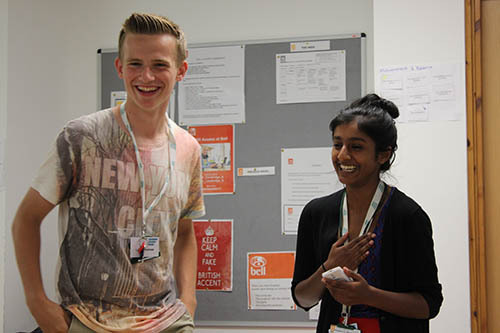
What are the pros and cons of students being exposed to both East and West education systems during the course of their secondary school careers? What significant convergence examples or trends have you already seen?
Pak Tee Ng: Students who have been exposed to both East and West education systems during the course of their secondary school careers have the advantage of being more attuned to both cultures. Those who can successfully negotiate between two culturally distinct environments with ease become natural leaders in cross-cultural situations, making them cultural brokers and marketable cosmopolitans. They are in a position to bring different people together to live and work harmoniously.
However, while it is important for these students to appreciate another distinctively different culture, it is also important that they can appreciate their own cultural inheritance. Sometimes, there is a danger of over-subscribing to someone else’s culture. Students need to be mature enough to learn the best rather than the worst of both worlds, and to blend these best features together.
There is a great convergence in the major cities of the world today. One gets cuisines from all over the world in one city and many fusion restaurants. One sees young people in Asian cities gathering in Starbucks and Mcdonald’s, while more and more non-Chinese students in English speaking countries such as the UK, US and Australia are learning Mandarin. So, the challenge for global cities is to preserve their cultural distinctiveness in this tide of convergence.
Dennis Shirley: Students from Western systems can learn from the East about the importance of tenacious, disciplined study in which a group of peers supports one another over time.
Students from Eastern systems, on the other hand, can learn from the West about the importance of independent critical thinking, open-minded reasoning based on evidence and logic, and creative problem solving when applied to ill-defined problem sets. These are essential if we wish to live in societies which not only are economically competitive but also are free and encourage citizens to develop diverse perspectives on complex issues.
In spite of the high achievement of Asian students on international assessments, I observe a strong tendency, in East and West alike, to assume that Western systems are superior and set the standard for learning today. This may be true in some aspects, and especially in regard to teaching students to learn to think for themselves.
Eastern systems, however, have their own strengths and these can serve as correctives for deleterious aspects of western education. The Confucian tradition in particular provides a cultural reference that reveres learning, emphasizes self-discipline, and provides a compelling philosophical guide to living harmoniously with others.
In the West we’ve over-emphasized outcomes and under-valued processes, with the result that too many of our interactions are based on a narrow sense of self-interest.
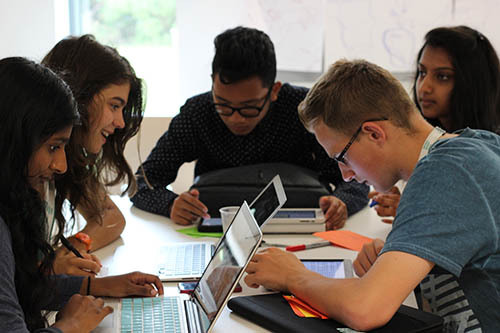
How should we steer this for purposes of optimal learning? What are some of the strategies you would employ?
Pak Tee Ng: For optimal learning, this process has to be facilitated and guided. In Singapore, there are a few school programs that develop certain students to be “bicultural”. These students are usually passionate about learning the cultures of the East and West in greater depth. These programs broaden the students’ horizons and equip them with global perspectives.
In most of these programs, students are introduced to historical analyses, contemporary reading and experiential learning to deepen their understanding of the historical, social, political and economic development of major Western and Eastern traditions. These students also get opportunities to have an immersion program in China, UK or US to do topical research on the cultures of different communities.
Through the programs, students are encouraged to be open-minded and yet critical in sieving out the best elements of the East and West. The important thing is to gain a better understanding of the differing analytical approaches and subtle cultural nuances adopted by both worlds.
Dennis Shirley: Cross-cultural encounters are happening at lightning speed around the world now, but these are driven foremost by the power of markets and not by an educational agenda.
Young people today are looking for a better and more imaginative change agenda than is offered either by government on the one hand or by business leaders on the other. Why not offer them a morally compelling agenda – for example, dedicating themselves to the goal of expanding educational access for all of the world’s marvelously diverse populations?
I propose that we ignite the imagination of the young by asking them to look beyond endless corporate competition and geopolitical rivalries to advance a world-historic agenda of eliminating illiteracy and achieving 8 years of universal education for all youngsters by 2030.
The next phase of educational change should get us beyond nationally-bounded models of improvement on the one hand and the market as elixir on the other. We should re-activate transnational organizations, civil society movements, and a newly united educational profession to provide a legacy for the rising generation that is worthy of all that is best and most worth preserving in our increasingly shared cultural heritages.
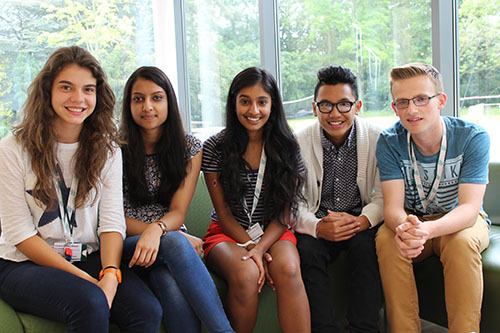
How does today’s technology enable us to enhance this process?
Pak Tee Ng: Technological advancements lead to enhanced connectivity between different communities of people. Faster speed of physical travel leads to a smaller world where cultural exchanges occur more intensely. Indeed, digital technology and the internet allow cultural meshing to occur through a “space” rather than a “place”. Information and Communications Technology (ICT) expands access to other cultures to students who may not be able to afford physical travel. Through ICT, students can link up with other students internationally anytime and anywhere, sharing thoughts and comments through video clips, audio sounds and graphical presentation.
But technology is a double-edge sword. The virtual medium is filled with both useful cultural information and harmful misinformation or propaganda. In order that the learning between East and West becomes useful, students have to make sense of a large volume of information and to differentiate good information from bad information. Bicultural learning activities require a high level of synthesizing skills and discernment.
So, technology can enhance cross-cultural learning. But technology itself is not the educator.
Dennis Shirley: New technological tools have important roles to play in facilitating cross-cultural communication, especially for those who do not have opportunities to travel. We’ve all seen the motivation that can be sparked when our students are placed in direct communication with others in a distant country.
Still, we should be honest and acknowledge the inherent limitations of new technologies. They can be expensive to install and their maintenance presents complicated new issues to educators. Students can bully one another and this can occur not just in one’s home community, but also through superficial digital encounters with those in unknown or distant locales. The full potential of new technologies also is constrained by the harsh realities of government surveillance and control in many countries.
We need our young today, whether they find themselves in the East or the West, to reach out to one another across international boundaries in a spirit of open-minded and curious conviviality. New technologies can initiate contacts and spark new friendships and this is essential. Still, there ultimately there is nothing like being in a foreign country, learning a new language, and exploring its diverse cultural manifestations through direct face-to-face encounters with others. These teach us about our own cultural blinders, open us to other ways of seeing the world, and enrich our appreciation of others and their cultures.
For other articles in the East vs. West series: East vs. West — A School in Beijing, East vs. West — News from Malaysia, East vs. West — Part 1
For more information on Ian Ailles
For more information on Pak Tee Ng
For more information on Dennis Shirley


All photos are courtesy of Global Study Pass
Join me and globally renowned thought leaders including Sir Michael Barber (UK), Dr. Michael Block (U.S.), Dr. Leon Botstein (U.S.), Professor Clay Christensen (U.S.), Dr. Linda Darling-Hammond (U.S.), Dr. MadhavChavan (India), Professor Michael Fullan (Canada), Professor Howard Gardner (U.S.), Professor Andy Hargreaves (U.S.), Professor Yvonne Hellman (The Netherlands), Professor Kristin Helstad (Norway), Jean Hendrickson (U.S.), Professor Rose Hipkins (New Zealand), Professor Cornelia Hoogland (Canada), Honourable Jeff Johnson (Canada), Mme. Chantal Kaufmann (Belgium), Dr. EijaKauppinen (Finland), State Secretary TapioKosunen (Finland), Professor Dominique Lafontaine (Belgium), Professor Hugh Lauder (UK), Professor Ben Levin (Canada), Lord Ken Macdonald (UK), Professor Barry McGaw (Australia), Shiv Nadar (India), Professor R. Natarajan (India), Dr. Pak Tee Ng (Singapore), Dr. Denise Pope (US), Sridhar Rajagopalan (India), Dr. Diane Ravitch (U.S.), Richard Wilson Riley (U.S.), Sir Ken Robinson (UK), Professor PasiSahlberg (Finland), Professor Manabu Sato (Japan), Andreas Schleicher (PISA, OECD), Dr. Anthony Seldon (UK), Dr. David Shaffer (U.S.), Dr. Kirsten Sivesind (Norway), Chancellor Stephen Spahn (U.S.), Yves Theze (LyceeFrancais U.S.), Professor Charles Ungerleider (Canada), Professor Tony Wagner (U.S.), Sir David Watson (UK), Professor Dylan Wiliam (UK), Dr. Mark Wormald (UK), Professor Theo Wubbels (The Netherlands), Professor Michael Young (UK), and Professor Minxuan Zhang (China) as they explore the big picture education questions that all nations face today. The Global Search for Education Community Page
C. M. Rubin is the author of two widely read online series for which she received a 2011 Upton Sinclair award, “The Global Search for Education” and “How Will We Read?” She is also the author of three bestselling books, including The Real Alice in Wonderland, is the publisher of CMRubinWorld, and is a Disruptor Foundation Fellow.
Follow C. M. Rubin on Twitter: www.twitter.com/@cmrubinworld



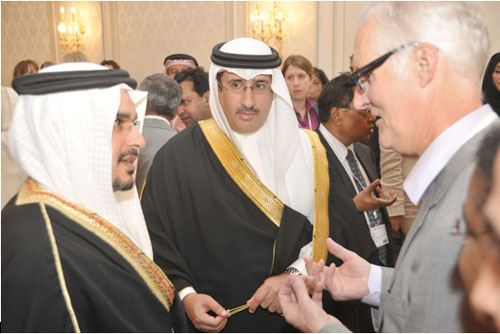
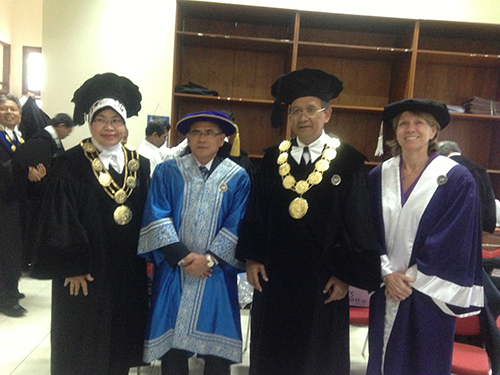
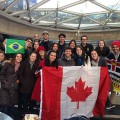
Recent Comments